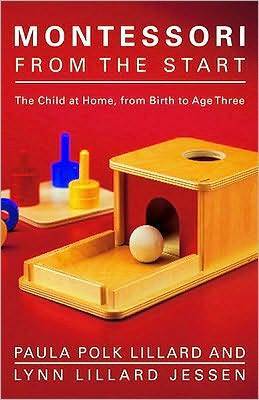More on this book
Community
Kindle Notes & Highlights
Started reading
December 25, 2019
abstract ideas and information of every possible kind should be given to the young child first in concrete form to be held, discovered, and explored. From this initial insight into the development of intelligence in young children, based on practical experience with children in extreme conditions, came all the Montessori materials so widely acclaimed today.
seeing the room.
everything that adults give to the young child for sensorial exploration should represent the real world.
Hence, the first mobile portrays flat, black-and-white geometric shapes and reflected light from a glass sphere. Subsequent ones are introduced in ordered sequence: three octahedrons of colored metallic paper, ideally each in a primary color; five Styrofoam balls covered with embroidery thread in gradations of the same color and hung in ascending order from darkest to lightest; stylized paper figures of light metallic colored paper that move with the slightest current of air; and, finally, stylized wooden figures painted in pastel colors.
A wooden ring about three inches in diameter with a thickness of half an inch is ideal.
Rattles
Repetition of the familiar is essential for developing focus and true knowledge at every stage of development.
“measuring spoon,” “spatula,” “brush,”
Best of all, Nienhuis, a manufacturer of Montessori materials, makes excellent wooden toys that aid the development of the hand for children of six months and older (Nienhuis, 320 Pioneer Way, Mountain View, CA 94041-1576, http://www.nienhuis.com/).
By eight or nine months, your baby can explore putting a wooden egg in a cup and a wooden cube in a box.


